January 6th, 2023
New York, NY
Today’s daily cartoon on the NewYorker.com was done by myself and my writing partner, Scott. (Yes, I’m glad it wasn’t a January 6th redux cartoon, too.)
January 26th, 2021
New York, NY
Thoughts on Creative Partnerships
The first time I was published in the New Yorker was the most amazing thrill. A career highlight. Nothing will beat that feeling of seeing my drawing and idea printed in the pages of a magazine I’d been reading since I stole copies from my Dentist’s office in Perth. (Sorry, Dr Farrugia).
But there is an aspect to our trade with which every cartoonist or stand-up comic is intimately familiar: and that is the solitude of being a ‘one-man band’. For the highest of highs (rare) and the lowest of lows (frequent), there is nobody to share it with, outside of an on-looking spouse or a flatulent dog at your feet.
This week’s issue of the New Yorker prompted me to write this post about teaming up with a fellow comedy writer for writing cartoons, since it may well be the record for the most publicly acknowledged* cartoonist duos in an issue of the New Yorker.
*(Gag writers never used to be credited. I’ll explain below**.)

In 2018, after 15 years of freelancing as a cartoonist and having been published many times flying solo, I started collaborating with my friend and fellow comic, Scott Dooley to share the frequent anxiety (and sporadic joy) of submitting New Yorker cartoons.
I hadn’t done this before and immediately found it so enlightening. Watching one of my own ideas go through the filter of somebody else’s comedy brain-wiring and come out the other end with a lateral tag or alt. punch I’d never have considered myself was addictive, and it suddenly clicked as to why there were such things as ‘writers rooms’. (I’m slow on the uptake.)
For years I had bumped into Scott in New York doing gigs around the city, and every time we saw each other we said we ought to grab a drink and talk shop. Inevitably, life, the road, work and everything else just got in the way and we never hung out. That was until one day when he flicked me an idea for a joke on Facebook.
I thought it was very funny. This was at the height of people seemingly Instagramming their every meal. The cartoon was of a guy on death row being read his last rites by a priest, Instagramming his final meal: A captionless cartoon (my favourite kind). I drew it up and sent it to him, then forgot all about it.
Years later, I was cleaning out my studio and unearthed the drawing. I mailed him the original with a thank you note for the laugh, and it sparked an idea from Scott: What if we caught up for a beer to throw some jokes around?
We caught up at a local bar and talked comedy for most of the time, but once in a while, one of us would have an idea for a stand-up bit, a MAD joke, or a New Yorker cartoon that we sort of threw around and punched-up until it had some legs.
This became something of a routine— meeting up on a Monday night at a bar in the East Village and throwing jokes around while we pored through that week’s edition of the New Yorker. We would inevitably utter the question, “Is there something in…”
The bartender was a fan of the New Yorker and could be heard chortling to himself as he eavesdropped on our morbid japery. That gave Scott the idea that this process might make a good podcast.
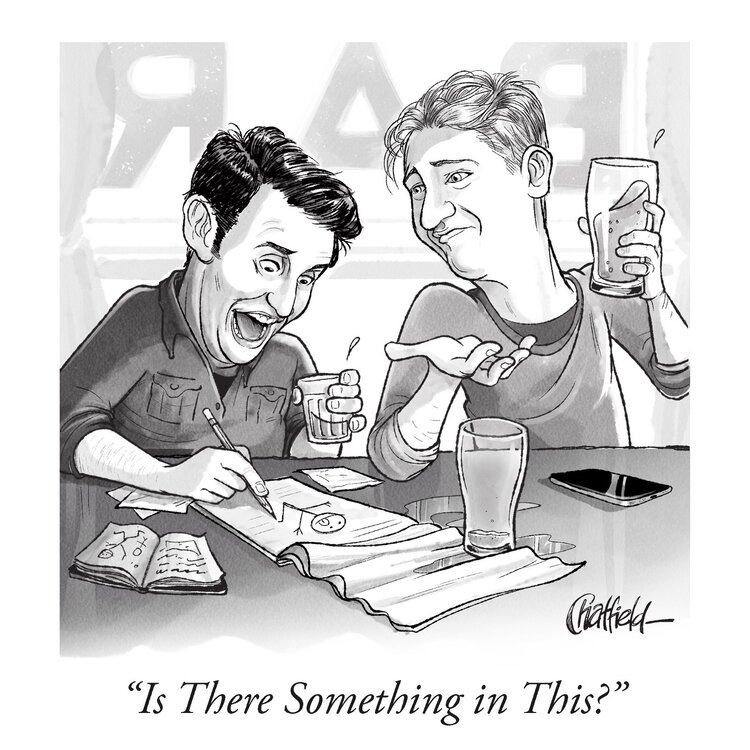
The process of having a live writers’ meeting —sitting down with loose scraps of cardboard, cocktail napkins and torn-off sheets of yellow legal pad and turning them into pitch-worthy cartoons— was as elusive as it was messy and funny. Nobody’s process is exactly the same, which I think is why it’s always the first question in any cartoonist interview (ie. “How do you come up with your ideas?")
Scott and I have a similar enough sense of humour that we developed a quick shorthand, but also have different enough sensibilities and areas of specialty that we’re able to enhance each others’ ideas. Overall, we just agree on what’s funny. (—and probably more importantly; what isn’t.)
Before long, Scott and I had sold a handful of cartoons to the magazine’s print and online editions, and we were recording live episodes in front of paid audiences with special celebrity guests, including Roy Wood Jr, Ronny Chieng and Bob Mankoff (Former long-time Cartoon Editor of the New Yorker).
Trying to keep up a weekly podcast in the midst of other work, travel, (ie. trying to record episodes between work commitments, travel between New York and Australia, France, UK, interstate) is a tricky thing, so we’ve put the podcast on hiatus. (There are worse problems to have than having too much work coming in.) Note: We still write cartoons together all the time.
Years after collaborating with Scott, I came to the realisation that almost all of my favourite movies, comics books, TV shows, albums, podcasts and comedy writing were almost entirely by creative partnerships…
Larry David & Jerry Seinfeld (Seinfeld)
Stephen Merchant & Ricky Gervais (The Office, Extras etc.)
Key & Peele
Abbi Jacobson and Ilana Glazer (Broad City)
French & Saunders (Ab Fab)
Tom Gammill & Max Pross (Simpsons, Seinfeld, Letterman, Curb)
Hale & Pace
Harry Bliss and Steve Martin
Mitchell & Webb
Martin & Molloy
Ben Folds & Nick Hornby (Lonely Avenue)
D.B. Weiss and David Benioff (Game of Thrones …until season 8)
Stan Lee & Steve Ditko (Spider-man)
Carl Reiner & Mel Brooks
George Burns & Gracie Allen
Jack Burns & George Carlin
I could keep going…
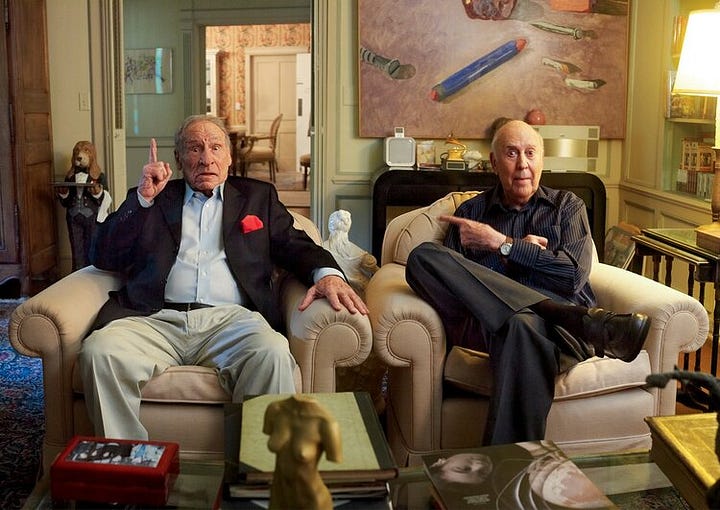
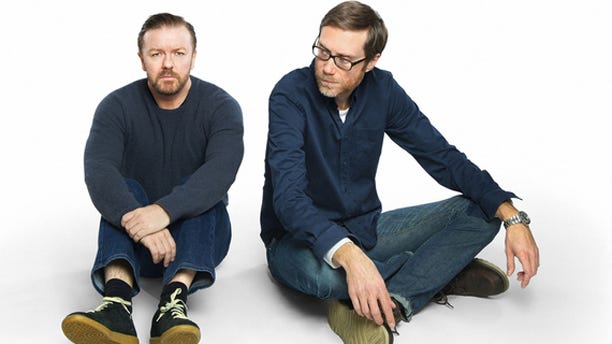
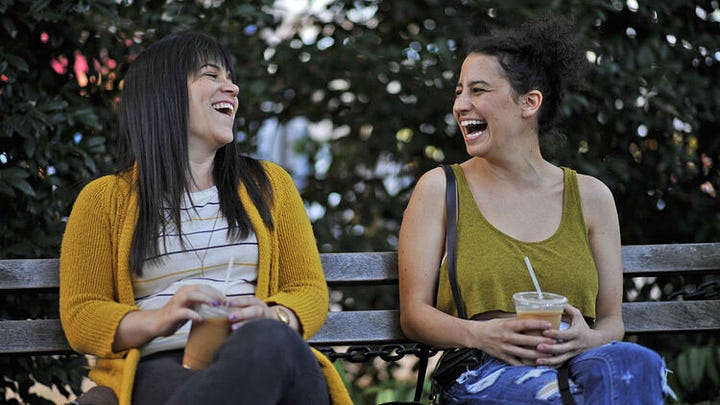
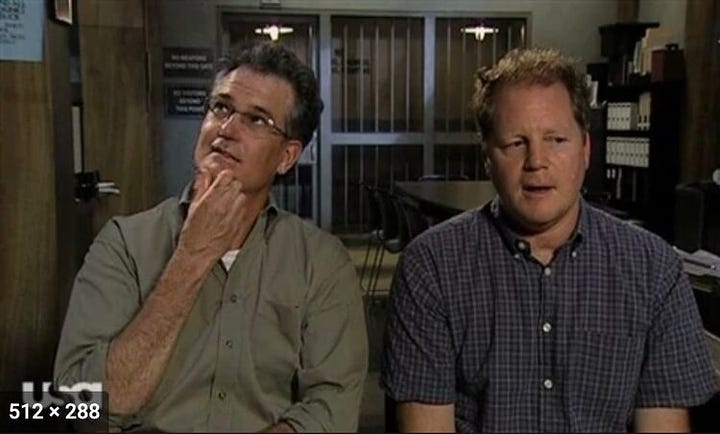
To be clear, I’m not putting myself and Scott in the same league as these lowly amateurs, but there really was something unique about the work from these partnerships that really resonated with me. They were able to create things so unique that either writer couldn’t have produced it in solitude.
I’ve been getting a lot of questions about having collaborators lately.
Cartoonists having writers isn’t a new thing. Sure, you have gag-writers for comic strips, and the regular comic strip duos like Parker & Hart (B.C. & The Wizard of Id), Scott & Borgman(Zits), Wayno & Pirraro (Bizarro, post-2009), Kirkman & Scott (Baby Blues), Hoest & Reiner (The Lockhorns, etc.) Parker & Kelly (Dustin) and dozens more, but over at the New Yorker cartoonists having gag writers used to be de rigueur. From the early days, New Yorker cartoonists used to be sent gags to draw rather than write their own.
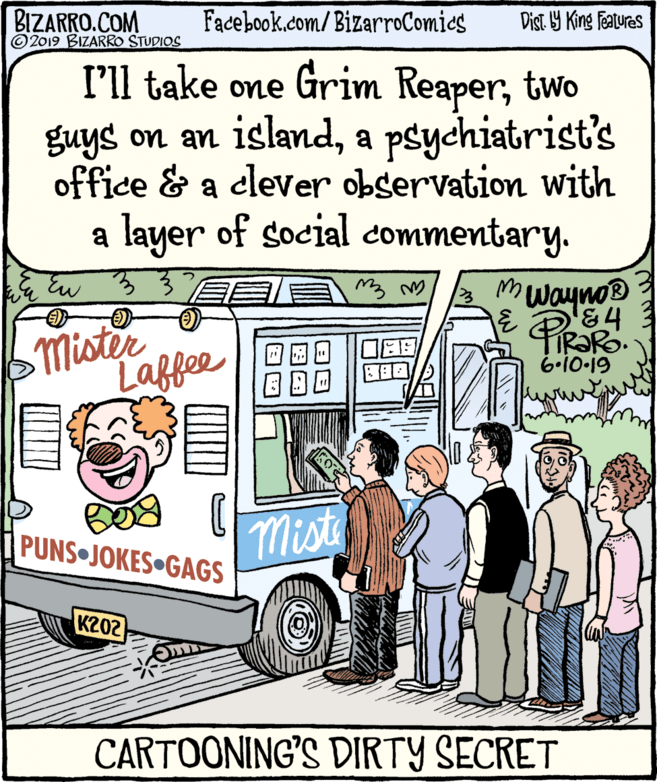
When I asked New Yorker cartoonist, Michael Maslin for clarification on this recently, he shared the following:
”Buying ideas goes back to the very beginning of the magazine. I believe the earliest payment was $15.00 per idea then. By the time the New Yorker bought a couple of ideas from me: the first in the late 1970s (drawn by Whitney Darrow, Jr.) and another in the early 1980s (drawn by Charles Addams) I was paid $150.00 per idea (so I think we can safely assume the payments for ideas slowly slid upward through the decades (is that a real thing? sliding upwards?).
Here is the cartoon idea I submitted:
And here is the published version by Darrow.
“There were also several writers contracted by the magazine (Herb Valen was one). Their payment must surely have been somewhat higher than the ideas lifted out of the slush pile.
From the ‘30s and ‘40s, many of the artists/cartoonists did do some of their own jokes, but they were more like the team you have, where you have someone like Peter Arno of very high skill (or the art editor at that time, Jim Gerity) who was a radio gag-writer, who supplied all of (Peter) Arno's jokes. All of George Price's jokes were supplied so you could get this incredibly high artistic talent matched with high gag talent.
In the '60s the ethos became more singer-songwriter; the person has to do the whole thing.”
I still have a lot of my own solo cartoons published all over the place, but whenever a cartoon that is co-created by Scott is shown anywhere (social media, published in print or online) I insist his name appear in the credit. This isn’t the tradition, but I don’t want to have the ideas published unless we get to enjoy the success together.
Sometimes a cartoonist will put the collaborator’s signature on the cartoon above/beside their own which I’ve seen lately too with some fun collaborations between New Yorker cartoonists like Ellis J. Rosen, Joe Dator, Liam Walsh, Bob Eckstein and many more. (Ed Note: These days I just add Scott’s name to the signature.)
One of the more recent and famous New Yorker collaborations is that of comedy legend Steve Martin and the prolific Harry Bliss. In a recent article in the magazine (and a slew of other interviews promoting their book), Martin & Bliss talked about their process of collaboration... in cartoon form.
(Further reading via Maslin’s Ink Spills blog:)
**“Throughout The New Yorker’s history, no ideaman’s/collaborator’s name appeared on the work alongside the artist’s name. When the magazine opened up its Table Of Contents in the issue of March 22, 1969, listing its writers & artists, readers did not see ideamen co-credited with the artists. Mischa Richter, for instance, continued to work closely with his long-time ideaman, Harald Bakken***, but only Richter’s name appeared in the magazine’s Table Of Contents. Although a small handful of cartoonists continued collaborating, collaborations weren’t noted on The Table of Contents until 1994, when Liza Donnelly and this cartoonist collaborated for a color strip about a visit to “Beatlefest” in the New Jersey Meadowlands. Another married cartoonist couple, Robert Crumb and Aline Kominsky Crumb received co-credit the following year for the first of a handful of pieces (color spreads) they contributed.“
All in all, I always encourage any creative artists to collaborate and explore with like-minded friends and colleagues. Cartooning is a unique field, in that despite us all technically being in competition, we’re all friendly and encouraging with each other.
If you’re considering getting a project done but part of it seems beyond your own skill set, don’t be afraid to share the load! You get to enjoy the process together, which is the most important part — and if it ends in great success, it’s a bonus.
I love hearing from people about their influences. Post your favourite duos in the comments!


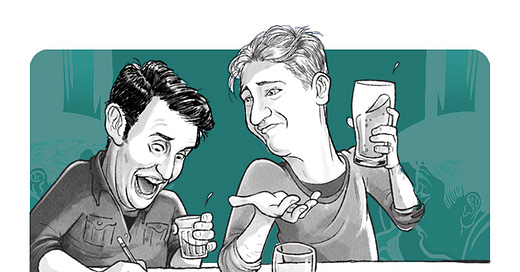


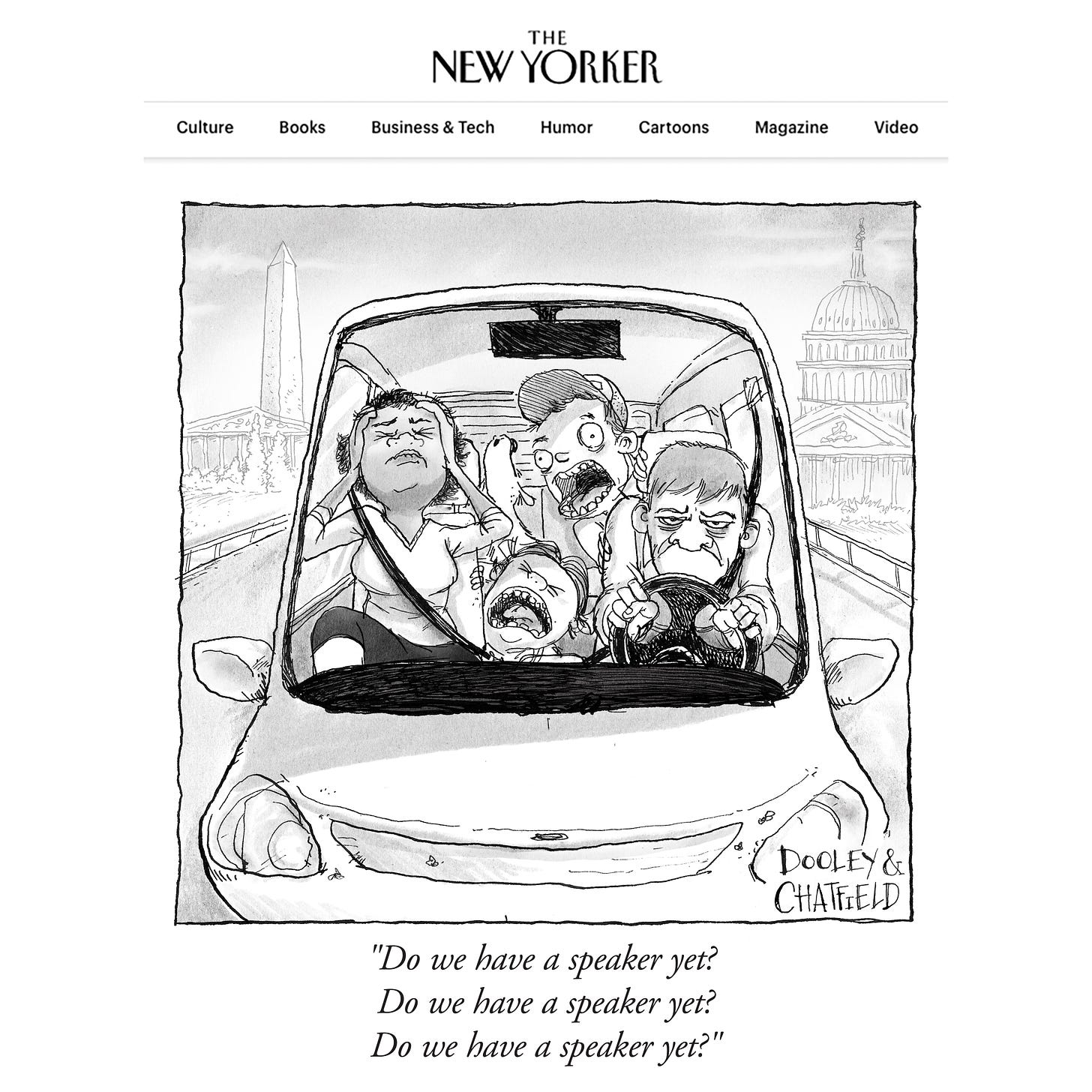
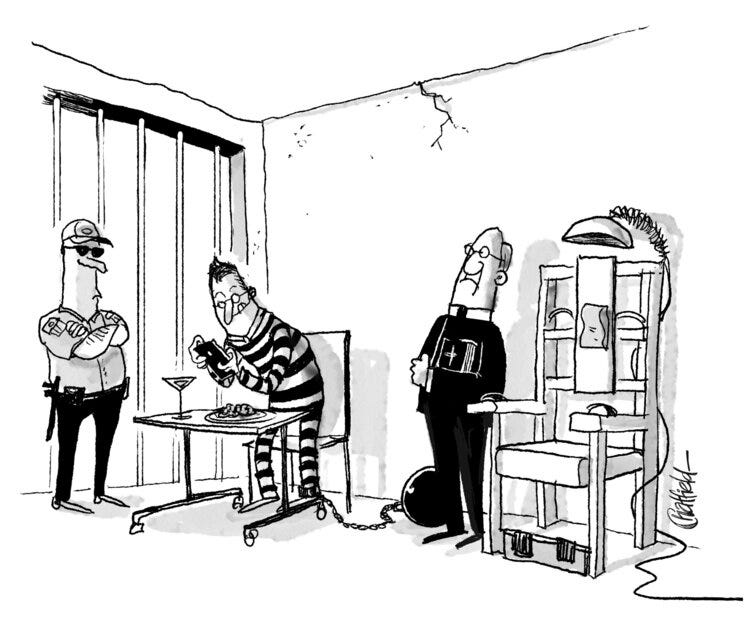
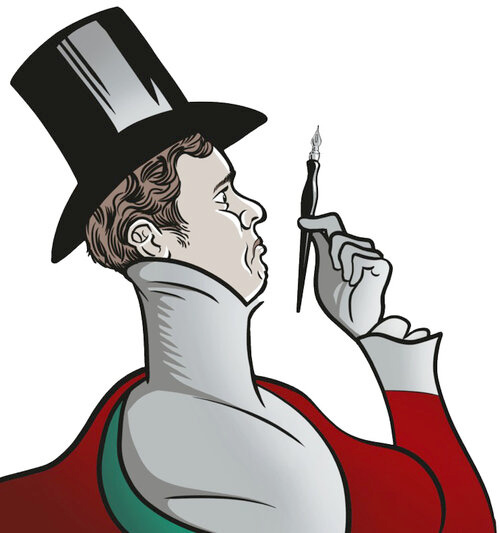
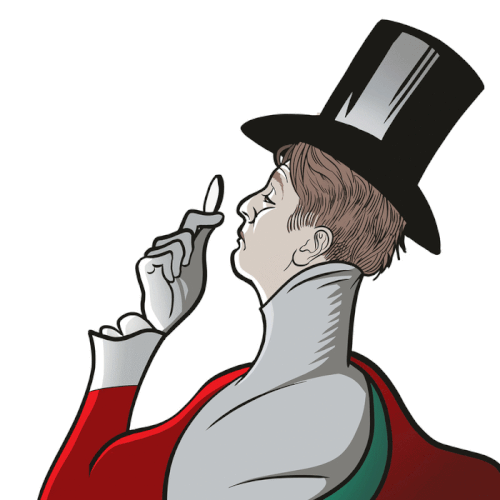
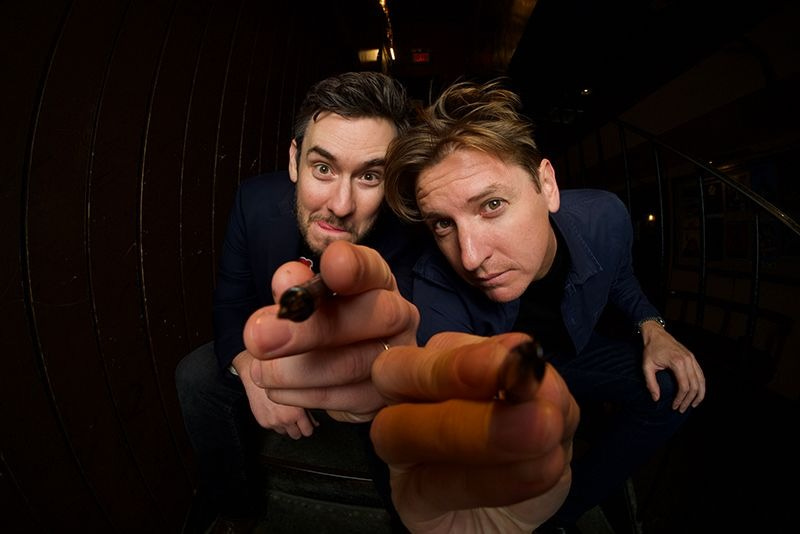

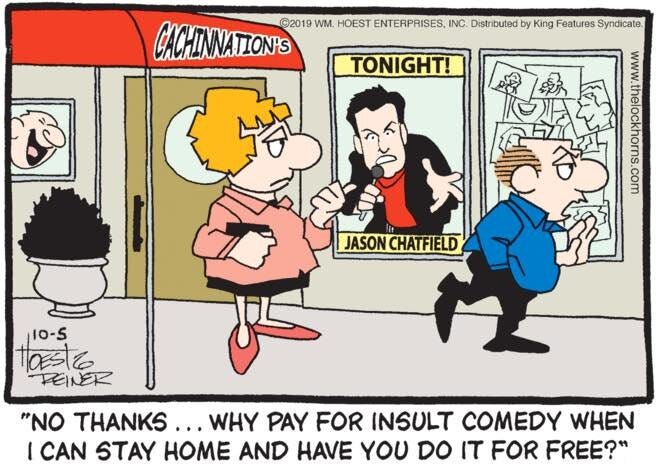
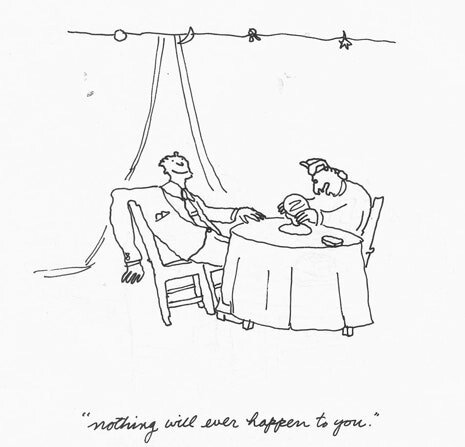
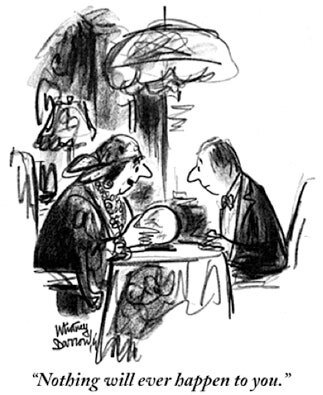

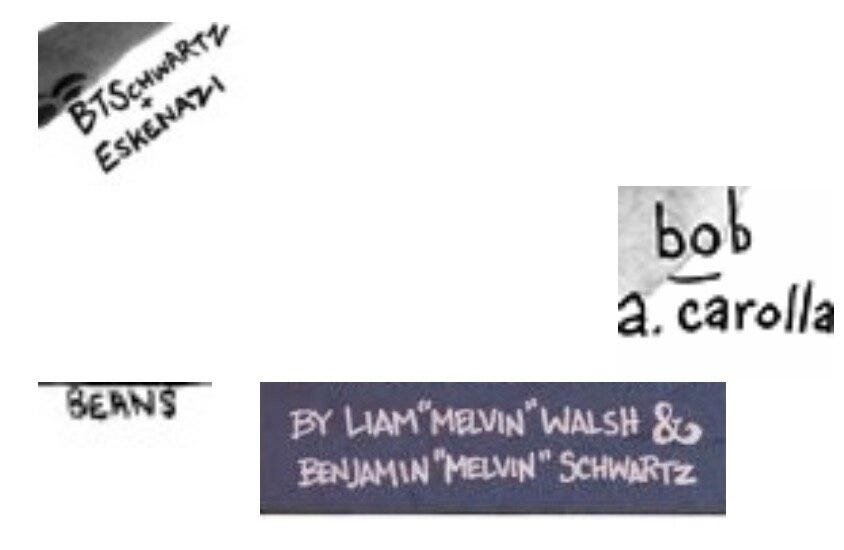
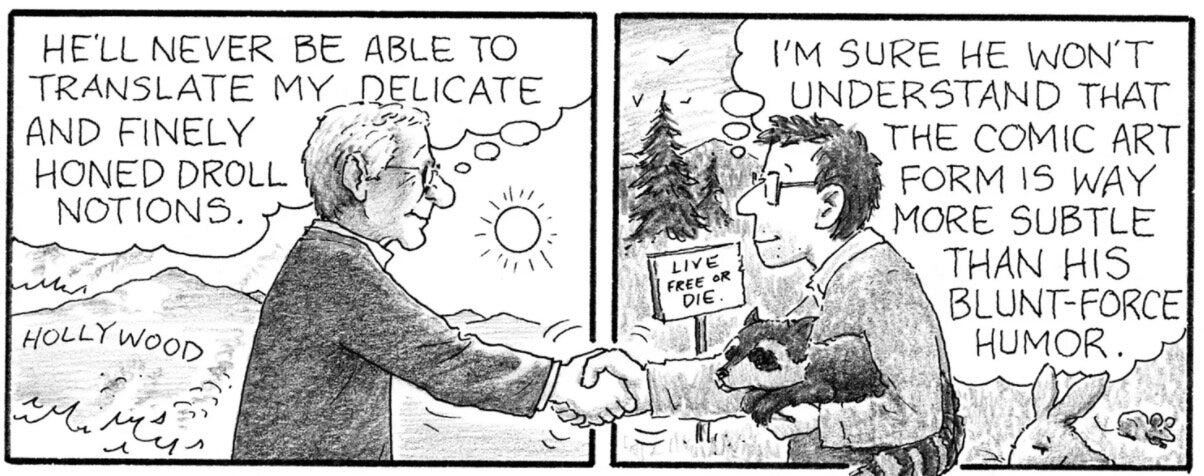
This is great, Jason! So much more energy when you have a creative partner in crime (that’s been my experience)
That was an interesting read, Jason. Thank you. I've been unaware of collaborative partnerships in cartooning. Rather, I've always imagined the cartoonist as very much a solo-practioner.